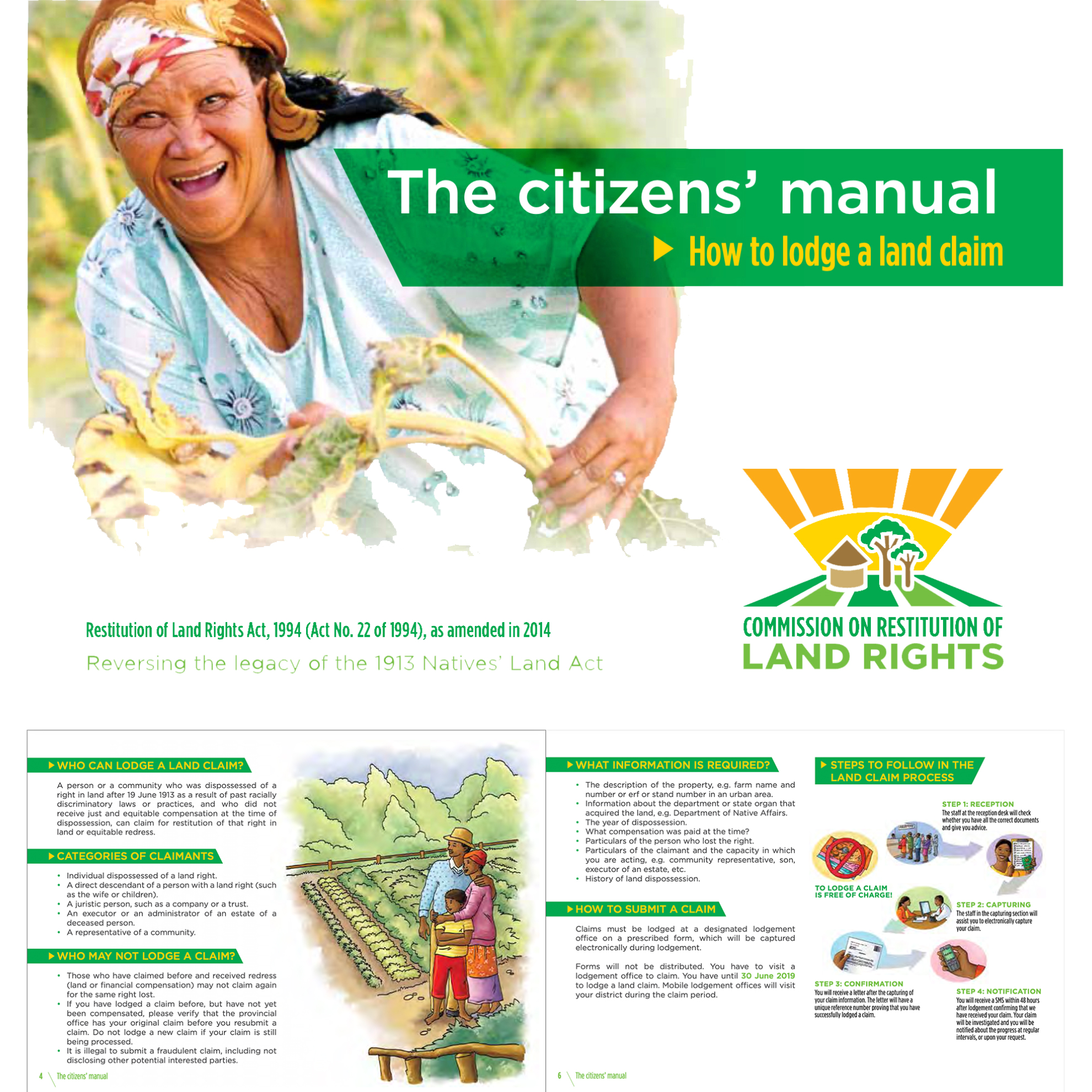Reconciliation Policy
“
—”
The Restitution of Land Rights Act 22 of 1994 was a critical racial reconciliatory document following the end of apartheid in South Africa. Promulgated as part of the 1994 Interim Constitution of the Republic of South Africa, the act gave native peoples and communities that were displaced and expropriated due to apartheid, the right to be restituted or compensated for their dispossessed properties.1
The restitution act also established the Land Claims Commission, which processed claims of the expropriated native proprietors, and awarded land compensations for the landowners that were losing their property as a result of the reparations.
Claimants qualified if they were
- Must be a person dispossessed of a right in land after 19 June 1913 as a result of past racially discriminatory laws or practices.
- Is a deceased estate disposed of a right in land after 19 June 1913 as a result of past racially discriminatory laws and practices.
- Must be a direct descendant of a person referred to in paragraph (a) who died before lodging a claim, and has no ascendant.
The individual, community or part of community dispossessed of a right in land after 19 June 1913, as a result of past discriminatory laws and practices.2
![]() Image source:
Government Gazette Of The Republic Of South Africa, No. 22 Of 1994: Restitution Of Land Rights Act, 1994, Pg 1, 2 .
Image source:
Government Gazette Of The Republic Of South Africa, No. 22 Of 1994: Restitution Of Land Rights Act, 1994, Pg 1, 2 .
References
1. SAHO. “Land Restitution in South Africa since 1994.” South African History Online, April 4, 2014. https://www.sahistory.org.za/article/land-restitution-south-africa-1994.
2. South African Government. “Restitution of Land Rights Act 22 of 1994.” GOVERNMENT GAZETIE, November 25, 1994. https://www.gov.za/sites/default/files/gcis_document/201409/act22of1994.pdf.
1. SAHO. “Land Restitution in South Africa since 1994.” South African History Online, April 4, 2014. https://www.sahistory.org.za/article/land-restitution-south-africa-1994.
2. South African Government. “Restitution of Land Rights Act 22 of 1994.” GOVERNMENT GAZETIE, November 25, 1994. https://www.gov.za/sites/default/files/gcis_document/201409/act22of1994.pdf.
 Image source:
Government Gazette Of The Republic Of South Africa, No. 22 Of 1994: Restitution Of Land Rights Act, 1994, Pg 1, 2 .
Image source:
Government Gazette Of The Republic Of South Africa, No. 22 Of 1994: Restitution Of Land Rights Act, 1994, Pg 1, 2 .